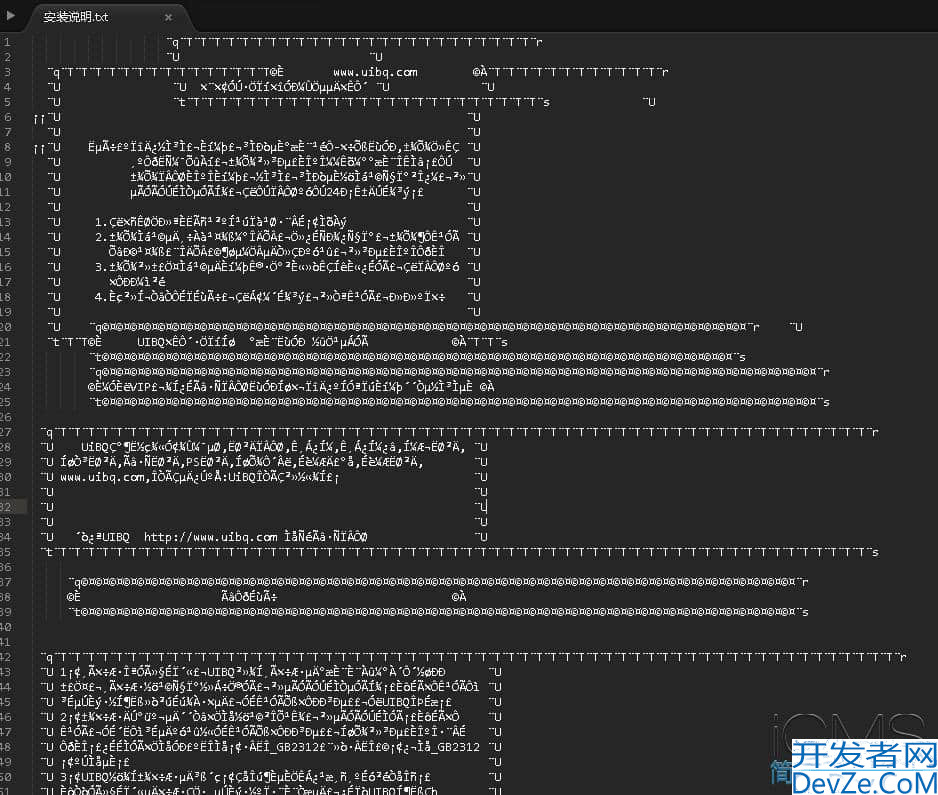使用原生Python编写Hadoop MapReduce程序
目录
- Hadoop Streaming简介
- python环境准备
- 示例:单词计数
- 1. Mapper脚本
- 2. Reducer脚本
- 3. 运行MapReduce作业
- 方法补充
在大数据处理领域,Hadoop MapReduce是一个广泛使用的框架,用于处理和生成大规模数据集。它通过将任务分解成多个小任务(映射和归约),并行地运行在集群上,从而实现高效的数据处理。尽管Hadoop主要支持Java编程语言,但通过Hadoop Streaming功能,我们可以使用其他语言如Python来编写MapReduce程序。
本文将详细介绍如何使用原生Python编写Hadoop MapReduce程序,并通过一个简单的例子来说明其具体应用。
Hadoop Streaming简介
Hadoop Streaming是Hadoop提供的一种工具,允许用户使用任何可执行的脚本或程序作为Mapper和Reducer。这使得非Java程序员也能利用Hadoop的强大功能进行数据处理。Hadoop Streaming通过标准输入(stdin)和标准输出(stdout)与外部程序通信,因此任何能够读取stdin并写入stdout的语言都可以被用来编写MapReduce程序。
Python环境准备
确保你的环境中已安装了Python。此外,如果你的Hadoop集群没有预装Python,需要确保所有节点上都安装了Python环境。
示例:单词计数
我们将通过一个经典的“单词计数”示例来演示如何使用Python编写Hadoop MapReduce程序。这个程序的功能是从给定的文本文件中统计每个单词出现的次数。
1. Mapper脚本
创建一个名为mapper.py的文件,内容如下:
#!/usr/bin/env python
import sys
# 从标准输入读取每一行
for line in sys.stdin:
# 移除行尾的换行符
line = line.strip()
# 将行分割成单词
words = line.split()
# 输出 (word, 1) 对
for word in words:
print(f'{word}\t1')
2. Reducer脚本
创建一个名为reducer.py的文件,内容如下:
#!/usr/bin/env python
import sys
current_word = None
current_count = 0
word = None
# 从标准输入读取每一行
for line in sys.stdin:
# 移除行尾的换行符
line = line.strip()
# 解析输入对
word, count = line.split('\t', 1)
try:
count = int(count)
except ValueError:
# 如果count不是数字,则忽略此行
continue
if current_word == word:
current_count += count
else:
if current_word:
# 输出 (word, count) 对
print(f'{current_word}\t{current_count}')
current_count = count
current_word = word
# 输出最后一个单词(如果存在)
if current_word == word:
print(f'{current_word}\t{current_count}')
3. 运行MapReduce作业
假设你已经有一个文本文件input.txt,你可以通过以下命令运行MapReduce作业:
hadoop jar /path/to/hadoop-streaming.jar \
-file ./mapper.py -mapper ./mapper.py \ -file ./reducer.py -reducer ./reducer.py \ -input /path/to/input.txt -output /path/to/output
这里,/path/to/hadoop-streaming.jar是Hadoop Streaming JAR文件的路径,你需要根据实际情况进行替换。-input和-output参数分别指定了输入和输出目录。
通过Hadoop Streaming,我们可以在不编写Java代码的情况下,利用Python等脚本语言编写Hadoop MapReduce程序。这种方法不仅降低了开发门槛,还提高了开发效率。希望本文能帮助你更好地理解和使用Hadoop Streaming进行大数据处理。
在Hadoop生态系统中,MapReduce是一种用于处理和生成大数据集的编程模型。虽然Hadoop主要支持Java语言来编写MapReduce程序,但也可以使用其他语言,包括Python,通过Hadoop Streaming实现。Hadoop Streaming是一个允许用户创建和运行MapReduce作业的工具,这些作业可以通过标准输入和输出流来读写数据。
方法补充
下面将展示如何使用原生Python编写一个简单的MapReduce程序,该程序用于统计文本文件中每个单词出现的次数。
1. 环境准备
确保你的环境中已经安装了Hadoop,并且配置正确可以运行Hadoop命令。此外,还需要确保Python环境可用。
2. 编写Mapper脚本
Mapper脚本负责处理输入数据并产生键值对。在这个例子中,我们将每个单词作为键,数字1作为值输出。
#!/usr/bin/env python
import sys
def read_input(file):
for line in file:
yield line.strip().split()
def main():
data = read_input(sys.stdin)
for words in data:
for word in words:
print(f"{word}\t1")
if __name__ == "__main__":
main()
保存上述代码为 mapper.py。
3. 编写Reducer脚本
Reducer脚本接收来自Mapper的键值对,对相同键的值进行汇总计算。这里我们将统计每个单词出现的总次数。
#!/usr/bin/env python
import sys
def read_input(file):
for line in file:
yield line.strip().split('\t')
def main():
current_word = None
current_count = 0
word = None
for line in sys.stdin:
word, count = next(read_input([line]))
try:
count = int(count)
except ValueError:
continue
if current_word == word:
current_count += count
else:
if current_word:
print(f"{current_word}\t{current_count}")
current_count = count
current_word = word
if current_word == word:
print(f"{current_word}\t{current_count}")
if __name__ == "__main__":
main()
保存上述代码为 reducer.py。
4. 准备输入数据
假设我们有一个名为 input.txt 的文本文件,内容如下:
hello world
hello hadoopmapreduce is funfun with hadoop
5. 运行MapReduce作业
使用Hadoop Streaming命令来运行这个MapReduce作业。首先,确保你的Hadoop集群中有相应的输入文件。然后执行以下命令:
hadoop jar /path/to/hadoop-streaming.jar \
-file ./mapper.py -mapper "python mapper.py" \ -file ./reducer.py -reducer "python reducer.py" \ -input /path/to/input.txt \ -output /path/to/output
这里,/path/to/hadoop-streaming.jar 是Hadoop 编程客栈Streaming JAR文件的路径,你需要根据实际情况替换它。同样地,/path/to/input.txt 和 /path/to/output 也需要替换为你实际的HDFS路径。
6. 查看结果
作业完成后,可以在指定的输出目录下查看结果。例如,使用以下命令查看输出:
hadoop fs -cat /pathttp://www.devze.comh/to/output/part-00000
这将显示每个单词及其出现次数的列表。
以上就是使用原生Python编写Hadoop MapReduce程序的一个基本示例。通过这种方式,你可以利用Python的简洁性和强大的库支持来处理大数据任务。在Hadoop生态系统中,MapReduce是一种编程模型,用于处理和生成大型数据集。虽然Hadoop主要支持Java作为其主要编程语言,但也可以通过其他语言来编写MapReduce程序,包括Python。使用Python编写Hadoop MapReduce程序通常通过一个叫做Hadoop Streaming的工具实现。Hadoop Streaming允许用户创建并运行MapReduce作业,其中的Mapper和Reducer是用任何可执行文件或脚本(如Python、perl等)编写的。
Hadoop Streaming 原理
Hadoop Streaming工作原理是通过标准输入(stdijsn)将数据传递给Mapper脚本,并通过标准输出(stdout)从Mapper脚本接收输出。同样地,Reducer脚本也通过标准输入接收来自Mapper的输出,并通过标准输出发送最终结果。
Python 编写的MapReduce示例
假设我们要统计一个文本文件中每个单词出现的次数。下面是如何使用Python编写这样的MapReduce程序:
1. Mapper 脚本 (mapper.py)
#!/usr/bin/env python
import sys
# 读取标准输入
for line in sys.stdin:
# 移除行尾的换行符
line = line.strip()
# 分割行成单词
words = line.split()
# 输出 (word, 1) 对
for word in words:
print(f"{word}\t1")
2. Reducer 脚本 (reducer.py)
#!/usr/bin/env python
import sys
current_word = None
current_count = 0
word = None
# 从标准输入读取数据
for line in sys.stdin:
line = line.strip()
# 解析从mapper来的输入对
word, count = li编程客栈ne.split('\t', 1)
try:
count = int(count)
except ValueError:
# 如果count不是数字,则忽略此行
continue
if current_word == word:
current_count += count
else:
if current_word:
# 输出 (word, count) 对
print(f"{current_word}\t{current_count}")
current_count = count
current_word = word
# 输出最后一个单词(如果需要)
if current_word == word:
print(f"{current_word}\t{current_count}")
3. 运行MapReduce作业
要运行这个MapReduce作业,你需要确保你的Hadoop集群已经设置好,并且你有权限提交作业。你可以使用以下命令来提交作业:
hadoop jar 编程客栈/path/to/hadoop-streaming.jar \
-file ./mapper.py -mapper ./mapper.py \ -file ./reducer.py -reducer ./reducer.py \ -input /path/to/input/files \ -output /path/to/output
这里,/path/to/hadoop-streaming.jar 是Hadoop Streaming JAR文件的路径,-file 参数指定了需要上传到Hadoop集群的本地文件,-mapper 和 -reducer 参数分别指定了Mapper和Reducer脚本,-input 和 -output 参数指定了输入和输出目录。
注意事项
确保你的Python脚本具有可执行权限,可以通过 chmod +x script.py 来设置。
在处理大量数据时,考虑数据倾斜问题,合理设计键值对以避免某些Reducer负担过重。
测试Mapper和Reducer脚本时,可以先在本地环境中使用小规模数据进行调试。
以上就是使用原生Python编写Hadoop MapReduce程序的详细内容,更多关于Python Hadoop MapReduce的资料请关注编程客栈(www.devze.com)其它相关文章!







 加载中,请稍侯......
加载中,请稍侯......
精彩评论